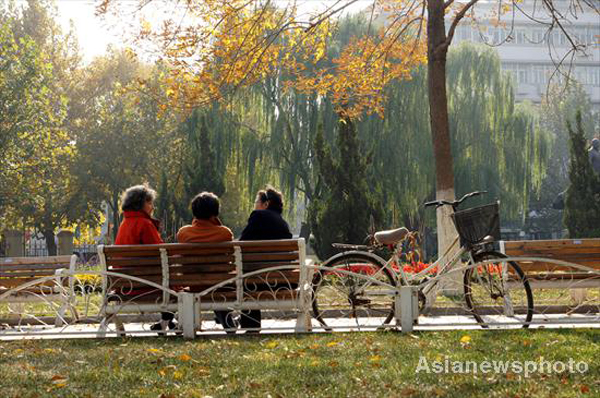The elderly deserve better care and happier life
By DU PENG (China Daily) Updated: 2015-12-10 08:13
 |
|
Three retired women chat in a park in Tianjin, Nov 4, 2010. In a research by the Chinese Academy of Social Sciences, during the 12th Five-Year Plan (2011-2015), the population of people over 60 will reach 200 million in China, and the period of 2016 to 2040 will see the population rapidly aging.[Photo / Asianewsphoto] |
Sad news came one after another in the past week. A man in his 70s froze to death in a shack at a village in Weifang, Shandong province, leaving his brother alone. A 63-year-old man living alone in Nanjing, Jiangsu province, and an aged man in Chengdu, Sichuan province, were found dead in their homes days after they "disappeared".
Earlier in Chengdu, a couple in their 80s died unnoticed, and their bodies had rotted by the time they were found.
The series of tragedies give an indication of the problems China's fast aging population will bring. According to the China National Committee on Aging, the period of rapid aging that started this year will end only in 2035, and during this time the population of the elderly is expected to increase by 29 percent, from 212 million to 418 million.
Since half of China's elderly population already lives in empty nests-in cities the percentage could be up to 70-caring for the elderly has become a big challenge. And one way to meet this challenge is to develop eldercare services.
China today has 27.5 beds per 1,000 senior citizens which are paid for from senior citizens' pension funds-an increase of 55 percent from 2010. These "pension beds" are the future of eldercare because they integrate institutions, homes and communities, and allow the elderly to get more attention. Pension service in line with other services catering to the needs of senior citizens can thus help meet part of the challenge of the aging population.
Also, senior citizens who live alone should get more care from volunteers. A regular knock at the door to enquire about senior citizens' health and well-being can save a lot of trouble.

I’ve lived in China for quite a considerable time including my graduate school years, travelled and worked in a few cities and still choose my destination taking into consideration the density of smog or PM2.5 particulate matter in the region.











